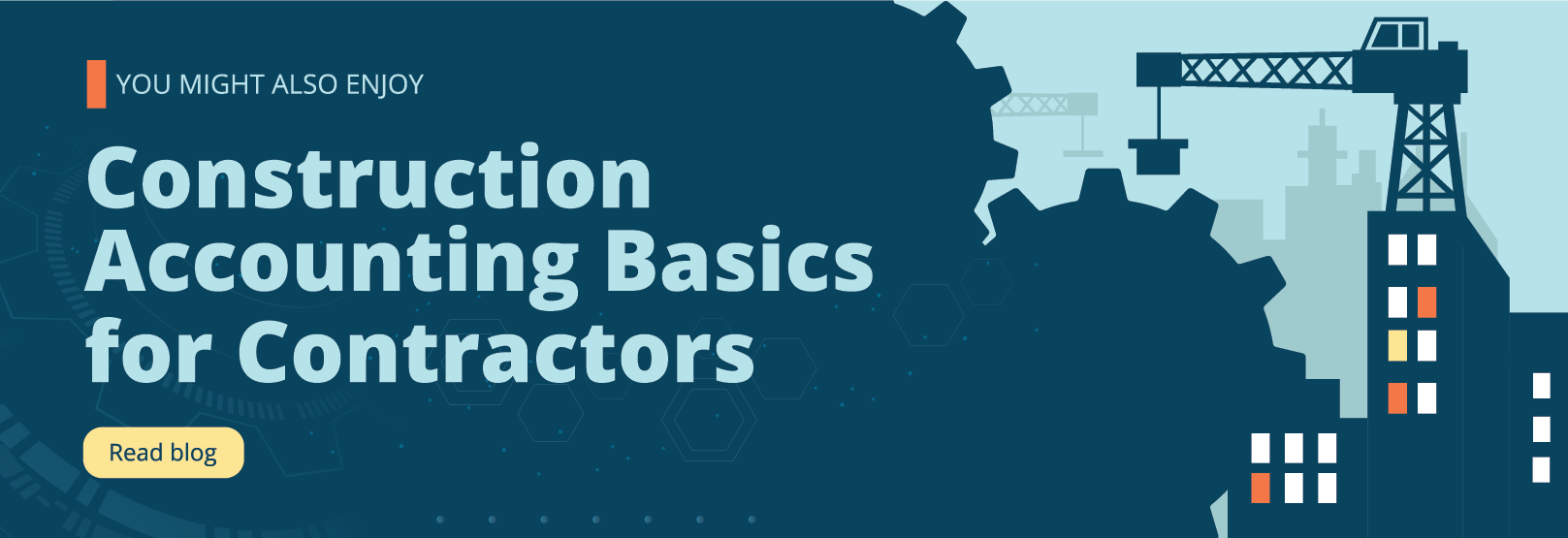4 min read
What Percentage of Construction Costs Is Labor?
-min-1.jpg?width=1000&height=629&name=construction-workers-sunset%20(1)-min-1.jpg)
Sometimes there’s truth to the old adage that if you want something done right, you do it yourself. And usually that’s when you’re working on a passion project that requires your own individual creativity. But smart business owners with growth mindsets know that delegating is actually one of the most important skills they could have.
For most of us, construction is one of those areas where it’s smart—and often safest—to hire someone to do the work for you.
If you want a construction job done correctly, it’s important to hire the right people. From supervisors to subcontractors, you need to trust that everyone will do a thorough and efficient job to help your business stay successful. That much is clear.
What isn’t clear is the construction labor cost as a percentage of the entire project. To hire high-quality employees, you’ll have to pay more. But how much is too much? How do you ensure that you’re maintaining a high standard of quality without sacrificing profit margins?
We’re here to help you understand how to calculate labor cost formulas that are right for your team. Read on for helpful resources for getting accurate projections for every job, and learn how construction bookkeeping and accounting software can help streamline the process.
How to Calculate Labor Costs: The Formula
Calculating the cost of labor will vary from project to project. While the construction labor cost percentage is more consistent, the actual number will change for every project.
The bad news is you’ll have to use this formula for every bid you submit to get an accurate projection for your labor costs. The good news is that once you have a goal for your project, it’s much easier to avoid overspending on labor or other surprises.

Direct vs. Indirect Construction Labor Costs
The two major factors that determine your budget for labor on any construction site are:
- Direct costs
- Indirect costs
Direct costs, as you might imagine, are simple to calculate. They cover the wages you pay your employees. Indirect costs are all the other variables that your company must pay for but aren’t always reflected in the paychecks.
Indirect costs include things like worker’s compensation, employee benefits, vacation, payroll taxes, training, employee development, and any uniforms supplied by your business.
Indirect costs can add up quickly and must be included in all your accounting, particularly when you’re putting together a bid for a new project.
If you want to know the cost of each employee to your company, you can add the direct costs and indirect costs and see the yearly amount your company needs to cover. More importantly, you should always know the labor burden to your business—that is, how much money you must pay to employ any individual beyond their salary.
Usually, you can find that number by dividing the indirect costs by the direct costs and multiplying that number by 100%.
To satisfy our fellow numbers nerds, here’s the formula for calculating labor burden:
-
Indirect Costs / Direct Costs x 100% = Labor Burden
Calculating Construction Labor Costs
Direct and indirect costs are the factors that influence how much your company must pay for each employee, but they still don’t tell you the construction labor cost percentage your company should aim for.
To determine this figure, start with the time each employee can work. Remember, the calculation won’t be as simple as 40 hours per week, 52 weeks per year.
You must account for PTO, holidays, and training time, too. It’s also a good idea to account for meetings, client calls, and any other administrative work your employee might do.
Let’s say that of the 2,080 available production hours per year, your employee only works a total of 1,880 hours (after you consider PTO, administrative tasks, and all other miscellaneous factors).
Now, calculate how much each indirect cost amounts to for that employee. From here, figure out how much extra money you must make per hour for each employee to cover the labor burden. Next, you factor in a markup that ensures profit for your company. The trick is to find that sweet spot that will keep your costs competitive but also attract the best talent!
Finally, you must make this calculation for each and every one of your employees.
As you can see, it’s easy for these things to become complicated.
Understanding Construction Labor Cost as Percentage of a Project
Depending on the labor burden associated with your employees, the percentage of your labor costs will change.
The cost of materials, project scope, and other requirements might also affect how much you should charge for labor. But according to The Construction Labor Market Analyzer, your construction labor cost percentage should be anywhere from 20 to 40% of total costs.
If you’re only accounting for direct costs, you can expect 20% of your total cost to be labor. But, if you are accounting for indirect costs as well, you should push this number closer to 40%.
Calculate Accurate Construction Labor Costs
As you can see, even if you know exactly how to calculate labor cost formulas, doing it repeatedly for each employee, new hire, and promotion on every job is exhausting. Your time is better spent optimizing your operations for better profit margins.
Rather than keeping track of all this information manually, try a bookkeeping and accounting software that’s specifically designed to calculate construction labor cost percentages and provide accurate projections for your projects.
Here are some benefits of adopting a software made for businesses like yours.
Bookkeeping Automation
Accurate bookkeeping will determine whether your company is successful. Small mistakes in your bookkeeping can have major consequences on your bottom line.
By automating your bookkeeping with a solution like Botkeeper, you can mitigate much of the risks associated with manual bookkeeping. Not only does automated bookkeeping save you time, but it gives you an up-to-the-moment look at the state of your construction business’ finances.
In terms of making smart decisions for the future of your business, an automation tool is one of the most valuable construction bookkeeping tips we can offer.
Robust Reporting
Identifying trends in project spending or labor costs can help you optimize your operations and grow your business faster. But seeing those trends using manual reports is difficult. Many times, you won’t know something is wrong until it’s too late.
Instead of hoping for the best, adopt an automated bookkeeping and accounting tool that can equip your team with comprehensive reporting.
Get help with everything from determining the right costs to speeding up the time it takes to get invoices paid with reporting that’s constantly learning from your processes and streamlining them for the future.
Improved Accuracy
The truth is, bookkeeping is a headache (to say the least). If it’s not your specialty, the time it takes to do a good job can be too much. Managing every line item, following up on every bill and invoice, plus making sure that your projects are on track and on budget is a lot to ask of anyone.
What’s worse, even the most seasoned accountants make mistakes. By automating your bookkeeping with a solution like Botkeeper, our Senior Accountants review your data to ensure accuracy so you can rest easy. Better yet, they’ll handle complex accounting issues and assist with any other needs. That way, you don’t have to!
Want to Save on Your Construction Labor Costs? Botkeeper Can Help
If you’re ready to elevate your construction business, improve your bottom line, and simply automate the complicated task of construction bookkeeping and accounting, click below to learn more about Botkeeper.




